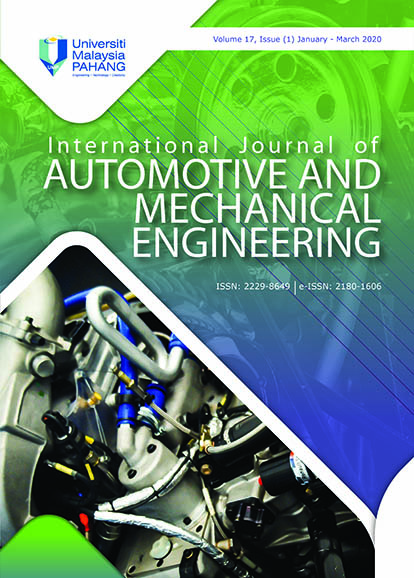Performance Evaluation of Cryogenic Treated and Untreated Carbide Inserts during Machining of AISI 304 Steel
DOI:
https://doi.org/10.15282/ijame.17.1.2020.18.0573Keywords:
Cryogenic treatment, Tool wear, cutting temperature, chip morphology, crater depthAbstract
The cutting tool in the machining process plays an important role as it acts on the working material. There are a few methodologies have been persued to improve tool life, for example traditional cooling, single layer coating, multilayer coating, heat treatment process, nitrogen cooling and latest being the cryogenic treatment which reported a significant improvement in cutting tool life, chip morphology, reduction in heat generation. Hence, the cryogenic treatment is emerged as the sustainable machining process. This paper presents machining of AISI 304 steel using both cryogenic treated (CT) and untreated (UT) cutting tool insert. The commercially available uncoated carbide insert has been cryogenically treated at -196°C for 24 hours soaking period. The machining test has been conducted under four different cutting speeds. The material characterization of cutting insert is studied by using scanning electron microscopy (SEM), hardness test, and microscopic image analysis has been carried out before and after cryogenic treatment. The cutting tool performance is assessed in terms of of wear, cutting temperature, chip morphology, surface roughness under the influence of cryogenic machining and the results are contrast with UT one. The exploratory findings reveals that the deep cryogenic treatment (DCT) with 24 hours soaking period, performed better wear resistance and improved surface roughness of the cutting tool. Also considerable reduction in the flank wear, crater wear, cutting temperature is obtained and found improved chip morphology.







